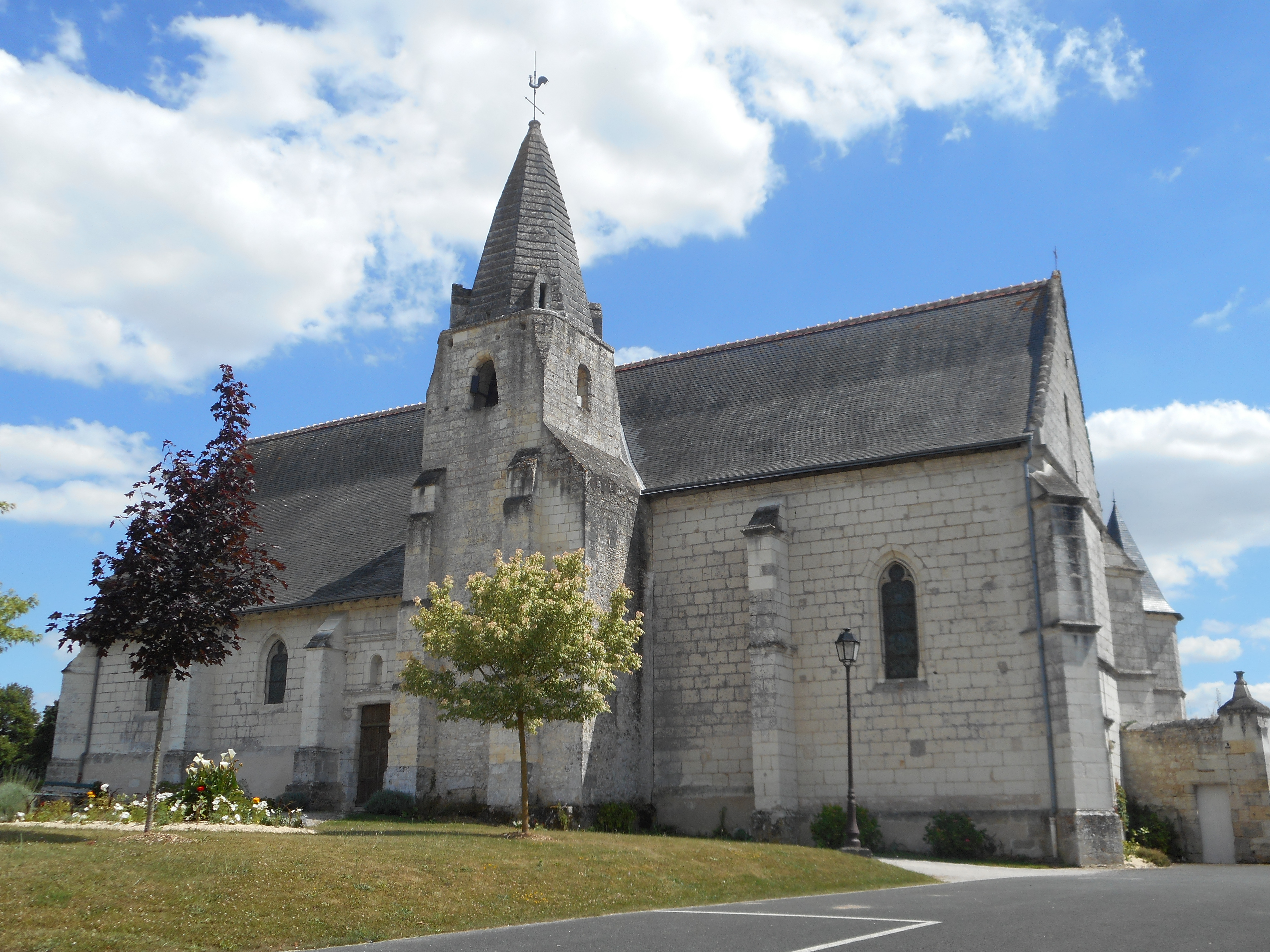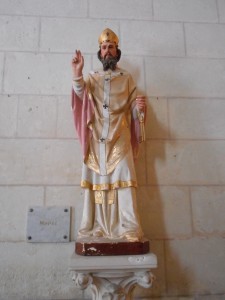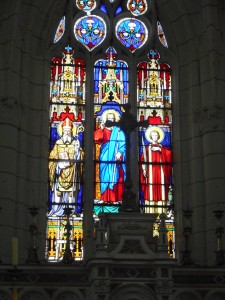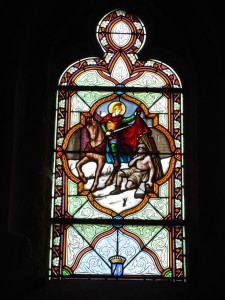Une première église Saint-Martin est fondée au XIIe siècle. L’église actuelle date du XVIe siècle. Les fondations de la nef du XIIè siècle furent utilisées dans la construction de l’église. Le clocher, aussi du XIIe siècle est toujours présent. Il a une ouverture en plein cintre, des fenêtres meurtrières éclairant les étages inférieurs, et se termine par une flèche octogonale. La porte principale, en arc surbaissé, est encadrée de pilastres Renaissance, et sa fenêtre est d’un style plus ancien, à meneaux flamboyants. L’église est classée monuments historique par arrêté du 27 octobre 1971.
Saint Martin est représenté en évêque, la statue est colorée, elle se trouve en hauteur. De la main gauche, saint Martin fait mine de tenir une crosse d’évêque, mais celle-ci n’est pas présente. De l’autre main, il dessine le geste de la bénédiction.
Le vitrail est non-daté et non-signé. Il se trouve dans le chœur de l’église, au-dessus du maître-autel. Saint Martin est en habit d’évêque, nimbé et mitré, il est vêtu d’une aube blanche avec une chasuble dorée. Il tient un livre dans la main droite et sa crosse dans la main gauche.
Vitrail non daté et non signé reprenant le tableau de Victor Schnetz « La Charité d’Amiens » (1824) qui se trouve dans la cathédrale Sain-Gatien de Tours. Saint Martin est représenté en légionnaire à cheval et coupe son manteau rouge. Le mendiant est à demi-nu, assis en s’appuyant sur des marches. Il porte un fardeau. Le sol est enneigé et l’on voit en arrière-plan les remparts d’Amiens.
Source Mérimée : PA00097621
The first church of Saint Martin was founded in the 12th century. The present church dates from the 16th century. The foundations of the 12th century nave were used in the construction of the church. The bell tower, also from the 12th century, is still there. It has a semicircular opening, loopholes to light the lower floors, and ends with an octagonal spire. The main door, with its low arch, is framed by Renaissance pilasters, and its window is of an older style, with flamboyant mullions. The church was listed as a historical monument by decree on 27 October 1971.
Saint Martin is depicted as a bishop, the statue is coloured, and it is placed high up. With his left hand, Saint Martin is pretending to hold a bishop’s crozier, but it is not present. With his other hand, he is drawing the gesture of blessing.
The window is undated and unsigned. It is in the choir of the church, above the high altar. Saint Martin is dressed as a bishop, nimbed and mitred, wearing a white alb with a golden chasuble. He holds a book in his right hand and his crosier in his left.
Undated and unsigned stained glass window from Victor Schnetz’s painting « La Charité d’Amiens » (1824) which is in the cathedral of Sain-Gatien in Tours. Saint Martin is represented as a legionary on horseback and cuts his red coat. The beggar is half naked, sitting on the steps. He is carrying a burden. The ground is covered in snow and the ramparts of Amiens can be seen in the background.

 "/>
"/>


